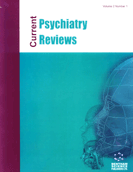Abstract
There is controversy as to whether compulsory community treatment (CCT) reduces health service use, or improves clinical outcome and social functioning. Given the widespread use of such powers in North America, Europe and Australasia, it is important to assess the benefits and potential harms of this type of legislation. Unfortunately, evidence for their effectiveness remains weak. In our Cochrane systematic review we were only able to identify two randomised controlled trials, and neither study showed any significant reductions in readmission rates, bed-days or arrests for cases on compulsory community treatment compared to appropriate controls. In terms of the number needed to treat (NNT), it would take up to 100 treatment orders to prevent one readmission, 25 to prevent one episode of homelessness and 500 to prevent one arrest. Including other study designs such as controlled before and after (CBA) studies made little difference to the results (total n=1108). There are other concerns for patients. This legislation stigmatises individuals with a severe mental illness, as many of these initiatives are named after a high profile victim of someone who happened to have a psychiatric illness. New York has a Kendras Law, California a Lauras Law, and Ontario a Brians Law. Compulsory community treatment appears to be immune from evidence-based practice, possibly because of the convenience of legislative as opposed to evidence-based solutions such as assertive community treatment.
Keywords: Compulsory community treatment, research methodology
 8
8

